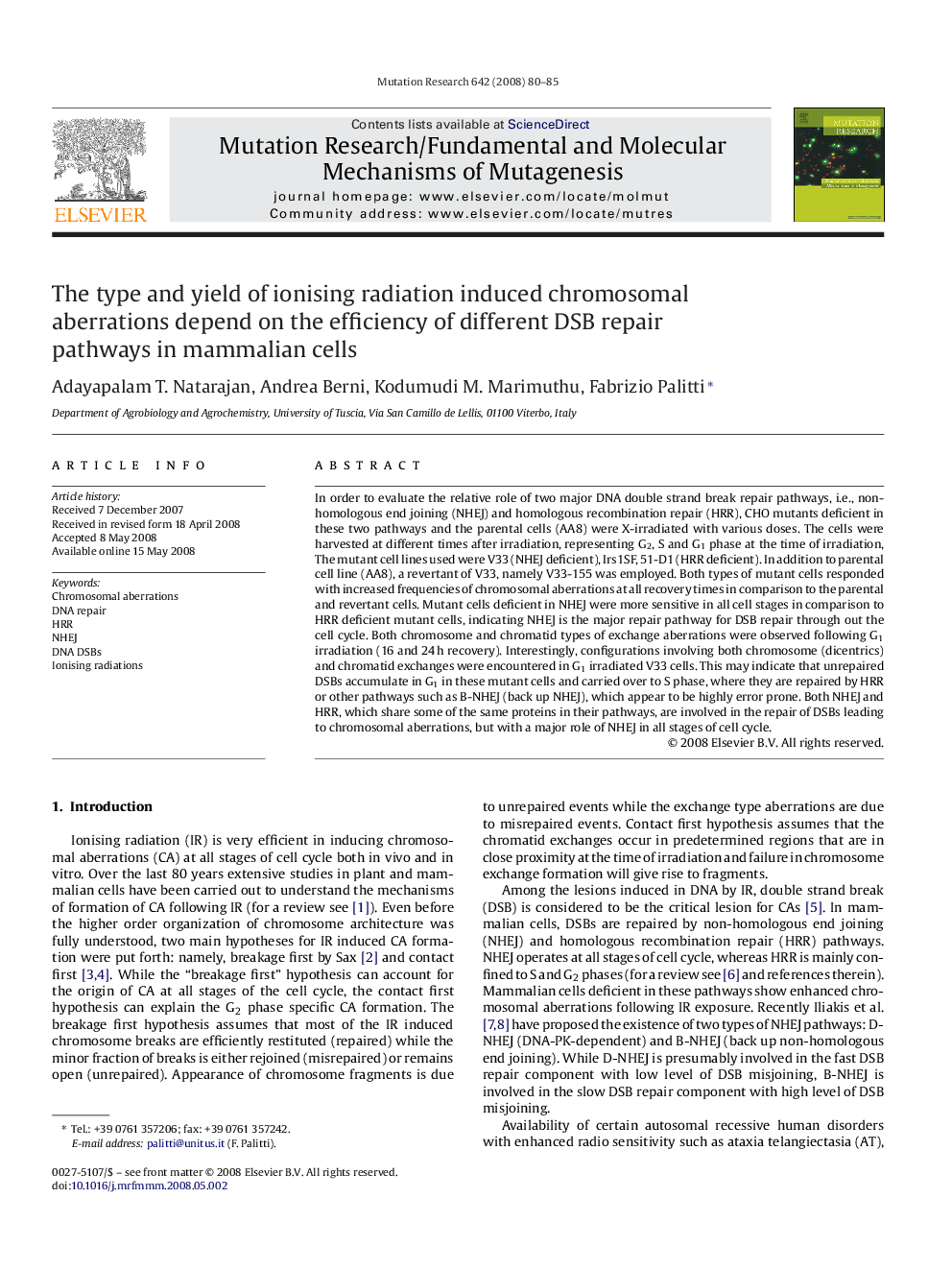| Article ID | Journal | Published Year | Pages | File Type |
|---|---|---|---|---|
| 2147143 | Mutation Research/Fundamental and Molecular Mechanisms of Mutagenesis | 2008 | 6 Pages |
In order to evaluate the relative role of two major DNA double strand break repair pathways, i.e., non-homologous end joining (NHEJ) and homologous recombination repair (HRR), CHO mutants deficient in these two pathways and the parental cells (AA8) were X-irradiated with various doses. The cells were harvested at different times after irradiation, representing G2, S and G1 phase at the time of irradiation, The mutant cell lines used were V33 (NHEJ deficient), Irs1SF, 51-D1 (HRR deficient). In addition to parental cell line (AA8), a revertant of V33, namely V33-155 was employed. Both types of mutant cells responded with increased frequencies of chromosomal aberrations at all recovery times in comparison to the parental and revertant cells. Mutant cells deficient in NHEJ were more sensitive in all cell stages in comparison to HRR deficient mutant cells, indicating NHEJ is the major repair pathway for DSB repair through out the cell cycle. Both chromosome and chromatid types of exchange aberrations were observed following G1 irradiation (16 and 24 h recovery). Interestingly, configurations involving both chromosome (dicentrics) and chromatid exchanges were encountered in G1 irradiated V33 cells. This may indicate that unrepaired DSBs accumulate in G1 in these mutant cells and carried over to S phase, where they are repaired by HRR or other pathways such as B-NHEJ (back up NHEJ), which appear to be highly error prone. Both NHEJ and HRR, which share some of the same proteins in their pathways, are involved in the repair of DSBs leading to chromosomal aberrations, but with a major role of NHEJ in all stages of cell cycle.
